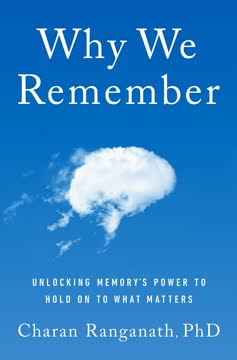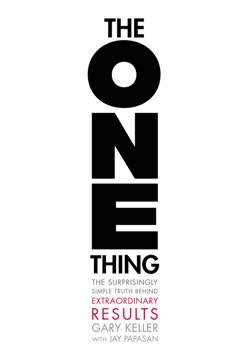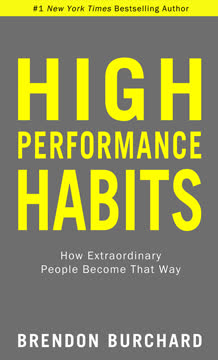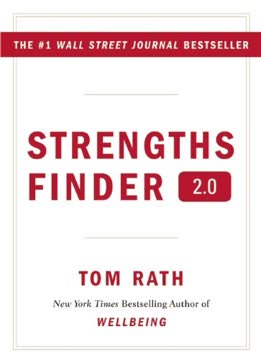Key Takeaways
1. Meaning: Prioritize Contribution Over Happiness
The pursuit of meaning — not happiness — is what makes life worthwhile.
Meaning over happiness. The book challenges the conventional pursuit of happiness, advocating instead for a life centered on meaning and contribution. It suggests that prioritizing the well-being of others and engaging in activities that benefit society leads to a more fulfilling and sustainable sense of purpose.
- Seeking happiness alone can be self-focused and ultimately unfulfilling.
- Creating meaning involves putting others' needs before your own.
- Meaningful activities elevate thinking beyond oneself.
Happiness vs. Meaning. While happiness is a positive condition, the constant pursuit of it can backfire. Research suggests that those who prioritize their own happiness are more likely to feel lonely. In contrast, meaningful lives derive joy from giving to others.
Physiological Impact. Studies show that happiness without meaning can lead to stress-related gene patterns associated with chronic inflammation, while meaningful activities, regardless of happiness levels, deactivate this stress response.
2. Intrinsic Motivation: Fuel From Within
Meaningful work is driven by intrinsic, rather than extrinsic, motivation.
Internal Drive. The book emphasizes the importance of intrinsic motivation, which stems from the meaningfulness of the work itself, rather than external rewards. It suggests that focusing on internal motivators leads to greater fulfillment and success.
- Extrinsic motivation involves doing things primarily to receive a reward.
- Intrinsic motivation is driven by what you yearn to do, even without compensation.
- Focusing solely on intrinsic motivation leads to better outcomes.
External Incentives. Research indicates that relying on external incentives can decrease performance. Cadets who entered West Point because of internal motivators were more likely to graduate and succeed compared to those motivated by external factors.
Cultivating Motivation. Developing intrinsic motivation often requires conscious effort. Reminding yourself of the intrinsic reasons for your work can significantly boost creativity and performance.
3. Work as Purpose: Making a Difference Daily
Work is a purpose, not a place.
Redefining Work. The book advocates for redefining work as something that makes a difference each day, rather than merely a means to an end. It suggests that work should be about productively applying your talent and strengthening your life and the lives of others.
- Work should be more than a monetary transaction.
- The fundamental relationship between employee and organization is changing.
- Work is about productively applying your talent.
Employee-Organization Relationship. A healthy relationship between an employee and an organization starts with a shared mission or purpose. Employees who derive meaning from their work are more likely to stay with an organization and have higher job satisfaction.
Personal Well-being. Personal well-being is just as important as engagement in the job. Showing up for work fully charged increases engagement and leads to better interactions with colleagues and customers.
4. Beyond Cash: Seek a Higher Calling
People who wrap their identity around their annual income rarely find satisfaction in their work.
Money's Limitations. The book cautions against working primarily for money, suggesting that it can be a modern-day form of bribery. It emphasizes that nonfinancial incentives, such as recognition, respect, and responsibility, can be more effective.
- Money and power can be used for great purposes, but they can also be a trap.
- Someone else will always have a bigger house or a better car.
- Financial security is vital to well-being, but making more money becomes less important for daily well-being once you reach a level of basic financial security.
Upward Comparison. Judging career success based on income can quickly lead you astray. Satisfaction and income are almost entirely relative to one's comparison group.
Meaningful Evaluation. Evaluate the health of your career more broadly by asking if your relationships are stronger, your physical health is better, and you are contributing more to society because of your job.
5. Interactions: The Ripple Effect of Moments
Each of our interactions also ripples outward in the network.
Everyday Exchanges. The book highlights the profound impact of everyday interactions on well-being. It suggests that life is a composite of millions of individual moments, and these exchanges give your days a positive or negative charge.
- Even brief interactions count.
- The frequency of these brief experiences is more important than their intensity.
- People who reported having great interactions throughout the day were nearly four times as likely to have very high well-being.
Assuming Good Intent. With each interaction comes a choice. It is crucial to do everything you can to turn mishaps into positive situations, even if the other person is at fault.
Proximity Matters. The people you interact with throughout the day have an enormous influence on your well-being. Physical proximity matters much more than one might guess.
6. Positivity Ratio: The 80/20 Rule for Relationships
At least 80 percent of your conversations should be focused on what’s going right.
Positive vs. Negative. The book emphasizes the importance of maintaining a high ratio of positive to negative interactions. It suggests that at least 80% of conversations should focus on what's going right to outweigh the impact of negative exchanges.
- Negative emotions produce higher levels of the stress hormone cortisol.
- Positive exchanges boost your body’s production of oxytocin.
- We need at least three to five positive interactions to outweigh every one negative exchange.
Positive Words. Positive words are the glue that holds relationships together. Most conversations, letters, and emails are overwhelmingly positive.
Paying Attention. Even when you can’t say something nice, go ahead and say something. Being ignored at work is even more detrimental to mental and physical well-being than harassment or bullying.
7. Experiences First: Invest in Memories
There is no better use of your financial resources than to spend them on meaningful experiences with other people.
Experiential Value. The book advocates for prioritizing spending on experiences over material possessions. It suggests that the best experiences create memories and well-being that last for years to come.
- Experiential purchases provide more happiness and more lasting value.
- Experiential purchases can boost the well-being of multiple people at the same time.
- Every dollar you spend on an experience with another person is a well-being multiplier.
Buying Happiness. If you buy a coffee for yourself, it does little for your own well-being. But if you buy a coffee for someone else, it boosts your well-being and the other person’s happiness at the same time.
Planning Ahead. Looking forward to a vacation or event provides even more happiness than the event itself. Even the memory contributed more to long-term well-being than the actual experience.
8. Health First: The Foundation of a Charged Life
If you want to make a difference — not just today, but for many years to come — you need to put your health and energy ahead of all else.
Prioritizing Health. The book emphasizes that putting your own health first is essential for effectively serving others. It suggests that even the most caring people need the daily energy to be effective.
- Some of the most mission-driven people have spent a lifetime putting everyone else’s needs before their own.
- You need the daily energy to do so effectively.
- People who have very high energy levels in a given day are more than three times as likely to be completely engaged in their work that same day.
Short-Term Thinking. Even a profound threat to one’s mortality is a poor motivator for making better decisions today. Making the connection between better decisions and daily energy levels has done far more to change behavior.
Accumulation of Choices. It is remarkable how quickly small choices accumulate, for better and for worse. A breakfast filled with sweet, baked, or fried foods makes it almost impossible to get back on track for the rest of the day.
9. Eat, Move, Sleep: The Energy Trifecta
Doing all three well is the key to having more energy throughout the day.
Interconnectedness. The book highlights the interconnectedness of eating, moving, and sleeping for maintaining high energy levels. It suggests that doing all three well is the key to having more energy throughout the day.
- When things go wrong in any one of these three areas, it throws everything else off course.
- A poor night of sleep leads to skipping a workout, lousy food choices, and so on.
- Doing just one of these things well can lead to an upward spiral in the other two areas.
Dietary Choices. The foods you eat directly influence your energy levels throughout the day. The quality of what you eat is more important than quantity alone.
Physical Activity. Being active throughout the day is the key to staying energized. Even 30–60 minutes of exercise a day will not cut it if you spend the rest of your day sitting around.
Quality Sleep. The less you sleep, the less you can achieve. A study from Harvard Medical School found that lack of sleep is costing the American economy $63 billion a year in lost productivity alone.
10. Resiliency: Responding to Stress as a Challenge
How you react to potential stressors determines whether you will suffer the consequences.
Reframing Stress. The book emphasizes the importance of how you react to potential stressors. It suggests that responding to a stressor as a challenge can increase your energy and provide a positive charge, while responding as a threat will leave you depleted.
- Responding to a situation as a stressor will leave you depleted.
- Reacting to the same event as a challenge could increase your energy and provide a positive charge.
- Human beings are remarkably resilient.
Pausing Before Responding. When you face an immediate and acute stressor, it helps to simply hit the pause button in your mind. The more something gets under your skin, causes your heart to race, and makes you breathe a bit more quickly, the more important it is to step back before speaking or typing a single word.
Forcing a Smile. Making yourself smile, even if it is fake and forced, may help you get through simple stressors. The researchers trained study participants to hold chopsticks in their mouth in a way that engaged facial muscles to force either a smile or a neutral expression.
11. Giving Back: The Ultimate Positive Charge
The best use of an hour is to invest it in something that will continue to grow.
Investing in Others. The book concludes by emphasizing the importance of giving back and investing in others. It suggests that spending time and resources on others yields a greater return than spending on yourself.
- When you add a positive charge to another person’s day, it carries forward into each of their subsequent interactions.
- You are much better at helping yourself if you are also helping another person with a similar problem.
- People may be even better at solving a creative problem for another person than they are at solving the same problem for themselves.
Sharing Resources. The act of giving does more for you than buying something for yourself. The good news is, you don’t need a lot of money to produce happiness by giving. All it takes is a little effort.
Making a Difference. You have a limited number of days to make a difference. This is one of the few certainties that everyone shares. It can also be an extraordinary motivational force.
Last updated:
Review Summary
Are You Fully Charged? receives generally positive reviews, with readers appreciating its practical advice on finding meaning, improving interactions, and boosting energy. Many find the book's research-backed insights valuable, though some note the information isn't entirely novel. Readers praise Rath's accessible writing style and the book's concise format. The three-part framework focusing on meaning, interactions, and energy resonates with many. While some desire more in-depth exploration, others find the book a helpful guide for personal growth and workplace improvement.
Similar Books






Download PDF
Download EPUB
.epub digital book format is ideal for reading ebooks on phones, tablets, and e-readers.








